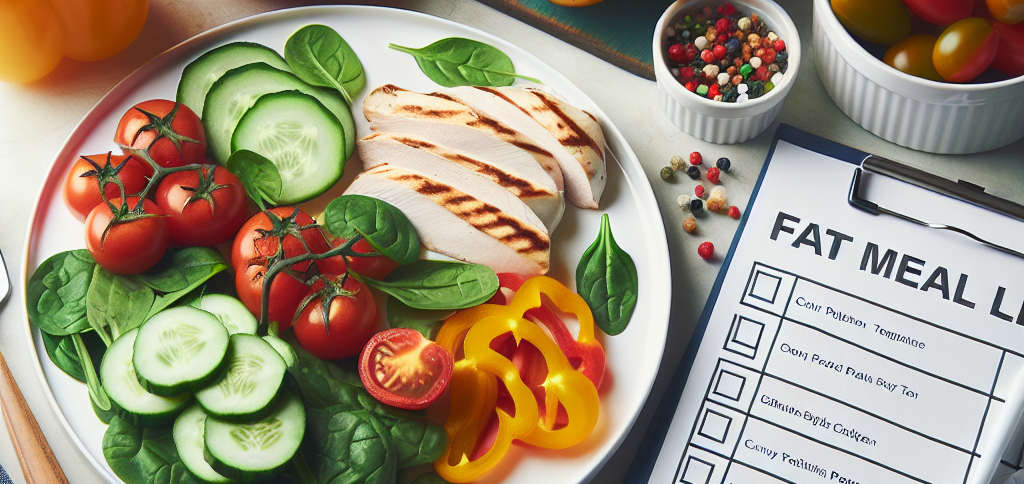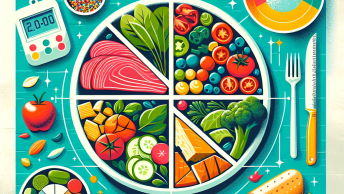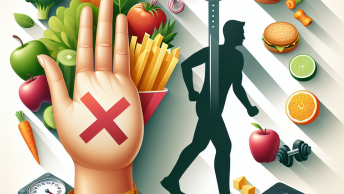When it comes to fat loss, the age-old adage holds true: "You are what you eat." A well-structured meal plan can play a crucial role in burning fat more effectively and achieving your fitness goals. Whether you aim to drop a few pounds or overhaul your entire lifestyle, a fat loss meal plan can help. Here are ten essential tips to guide you in creating a successful fat loss meal plan.
1. Set Clear Goals
Before you dive into meal prepping, it’s vital to set clear and realistic goals for your fat loss journey. Are you looking to lose weight quickly or maintain your weight while leaning out? Defining your targets will align your dietary choices with your objectives. For instance, losing 1-2 pounds per week is typically considered a healthy and sustainable rate.
2. Calculate Your Caloric Needs
Understanding your caloric requirements is crucial for success. To lose fat, you generally need to create a caloric deficit, which means consuming fewer calories than your body uses. Tools like the Harris-Benedict equation can help you estimate your Total Daily Energy Expenditure (TDEE). Once you know your TDEE, aim to consume approximately 500 calories less per day for effective fat loss.
3. Prioritize Protein
Protein plays a significant role in fat loss by promoting satiety, reducing cravings, and preserving muscle mass during weight loss. Aim for lean protein sources such as chicken, turkey, fish, legumes, and tofu. A good rule of thumb is to include a source of protein with every meal. Doing so will help you maintain muscle mass and increase your metabolic rate.
4. Embrace Whole Foods
Whole, minimally processed foods should be the backbone of your meal plan. These foods are often more nutrient-dense and lower in calories compared to processed alternatives. Fill your plate with vegetables, fruits, whole grains, nuts, and seeds to boost overall nutrition. This dietary shift not only aids in fat loss but also supports your overall health.
5. Control Portion Sizes
Understanding portion sizes is crucial in maintaining a caloric deficit. Using measuring tools like a food scale or measuring cups can help you avoid overeating. Additionally, practicing mindful eating—paying attention to your hunger cues and savoring each bite—will help you recognize when you’re full, reducing the likelihood of excess calorie consumption.
6. Stay Hydrated
Water is often overlooked when it comes to weight loss, yet proper hydration is essential. Drinking water can decrease hunger, boost metabolism, and prevent fatigue. Aim for at least eight 8-ounce glasses of water per day, or more if you’re active. Drinking water before meals can also reduce appetite, making it easier to stick to your caloric goals.
7. Plan Your Meals and Snacks
Meal prep is a game-changer in the journey toward fat loss. Design a weekly meal plan that incorporates your caloric needs and desired macronutrients. Prepare meals in advance, so you’re never caught off-guard and tempted to grab unhealthy options. Also, consider healthy snacks like almonds, Greek yogurt, or carrot sticks to avoid reaching for processed snacks that can derail your goals.
8. Limit Added Sugars and Refined Carbs
Added sugars and refined carbohydrates can sabotage your fat loss efforts. These foods tend to be calorie-dense but nutrient-poor. Instead, focus on complex carbohydrates like brown rice, quinoa, and whole-grain bread, which provide steady energy and fiber. Read nutrition labels carefully to avoid hidden sugars that can add up quickly.
9. Incorporate Healthy Fats
Contrary to popular belief, dietary fat is an important component of a fat loss meal plan. Healthy fats like avocados, olive oil, walnuts, and fatty fish are packed with nutrients and can help you feel satisfied. These fats can regulate hormones responsible for hunger, making it easier to stick to your caloric goals. Just remember to consume them in moderation.
10. Stay Flexible and Adjust as Needed
Lastly, the key to a successful fat loss meal plan is flexibility. It’s important to monitor your progress and adjust your approach as needed. If you hit a plateau, consider modifying your caloric intake or exercise regimen. Don’t be afraid to experiment with new recipes or cuisines to keep your meal plan exciting and enjoyable.
Conclusion
Creating a fat loss meal plan isn’t just about eating less; it’s about eating better. By following these ten tips, you can craft a meal plan that not only meets your caloric needs but also supports your overall health and wellness.
For a comprehensive overview of effective meal plans and strategies tailored specifically to aid fat loss, Click Here to learn more.
Remember, the journey to fat loss requires patience, dedication, and discipline. With the right approach and mindset, sustainable fat loss is within reach!






